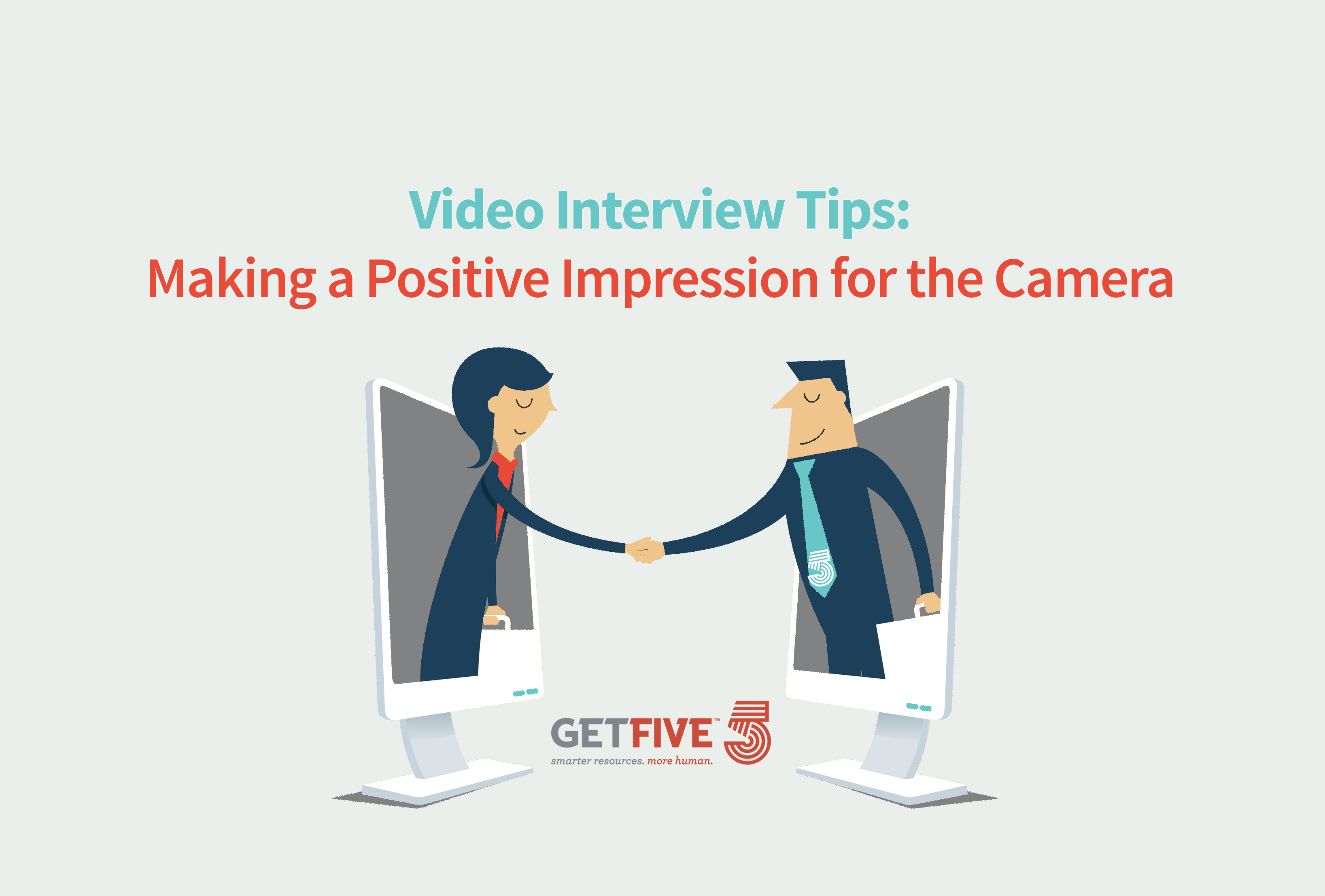Hiring managers are using video interviewing more frequently than ever before. For candidates, interviewing via video conference comes with numerous unique concerns that can cause plenty of anxiety. To avoid pitfalls and make a great professional impression, it’s important to prepare.
Two video interview methods
Candidates may experience two different types of video interviews. The first is a one-way interview where you’re asked a series of predetermined questions, and then your response is recorded and submitted to the hiring team for review. The second is a two-way interview, which is a live interview done via Skype or a similar technology, and mimics the format of a traditional in-person interview.
No matter if you experience one or the other, or both, it’s important to prepare yourself so you make the best impression possible.
Tips for video interviewing
Practice: With any interview, practice makes perfect. If you were provided prep materials and sample questions, go over them thoroughly. If you have the appropriate technology, record yourself speaking to the camera. Much like musicians or sports professionals review a play, use this video content to tweak your performance in the future.
Test technology: You may have to install new technology before a video interview. If so, be sure to test it first so you are familiar with any quirks and can handle them calmly. You may also want to experiment with lighting, too. Make sure it illuminates your face well. Heavy top lighting can create shadows that make you appear tired. What’s more, clear any clutter from the background. You want a plain setting so the focus is on you, not your wall art.
Dress well: A big part of making a great first impression is how you look. Do your hair, brush your teeth, and pick out a nice outfit from head to toe. Don’t become a joke by revealing your mistake of wearing PJ pants with a suit on top when a sudden technical glitch forces you to get out of your chair.
Look at the camera: In an in-person interview you wouldn’t be looking at the floor or the corner of the room. In a video interview, eye contact is equally important. Resist the urge to look at your own picture and keep focused on the camera. You’ll engage the person at the other end of the screen and come across as a savvy professional.
Speak steadily: You don’t want to rush, but you also don’t want to take so long that you run out of time. Speak slowly yet concisely to ensure your messages are being conveyed clearly. For one-way video interviews, there is often a time limit, so be aware as you are answering. You want to add compelling details within a given time frame. Remember, there are no do-overs.
The future of video interviewing
As more jobs become remote and technology allows recruiters to tap into talent pools worldwide, video interviewing is bound to become more popular. Learning how to make the best impression virtually will ensure you convey your potential so they can’t help but call you back for round two.









